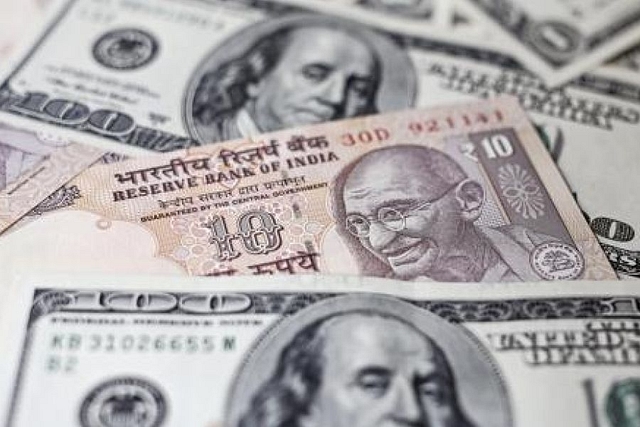
The Rupee Is Rising - Government Needs To Keep An Eye On Farm Exports, Manufacturing Sector
India cannot neither afford to have an overvalued currency nor an undervalued one. A balance has to be struck and, perhaps, the government has to look at policy options like lowering interest rates, which then could stimulate the economy.
In the last five days, Indian exporters have been unable to get a single contract to ship out sugar. Three things have compounded the problems of the sugar industry, which had managed to get contracts to export 9 lakh tonnes since the start of the new season on 1 October this year.
One, crude oil prices have dropped below $60 a barrel in the US, while Brent crude oil prices, the benchmark for India, have slipped to $63.41. Second, raw sugar prices have dropped to below 13 cents a pound. Third and most important, the Indian rupee has gained 4.5 per cent since it hit a record low of 74.56 to the dollar on 10 October.
Similarly, cotton exports, too, have lost their competitive edge. With the Cotlook A Index ruling at 86.30 and the rupee gaining against the dollar besides a spike in domestic prices, shipments of the natural fibre from the country have become unviable.
No doubt, all those political leaders who took turns to criticise the Narendra Modi government when the rupee was tumbling are silent now. But it is now when these leaders, starting from Congress President Rahul Gandhi, should have expressed concern.
On their part, ministers of the Modi government point out at the rupee’s rise as a sort of a health economic indicator. The problems created by a rising rupee could be more compared to a weaker Indian currency.
A strong rupee means less outgo of foreign exchange, especially the dollar. A weaker rupee means the reverse. This means, a strong rupee will make imports competitive, whilst rendering exports unviable, as we see in cotton or sugar or for any other farm commodity today. In fact, agricultural exports will be under pressure in view of a hike in minimum support prices for produces like rice, cotton, sugarcane and maize (corn).
There are experts who point out that a stronger rupee will help lower the oil bill since India imports nearly 80 per cent of its domestic demand. Also, the country imports a significant quantity of cooking oil and gold, that lead to a heavier outflow of foreign exchanges.
On the other side, we also need to keep in mind Indian exports. For example, Indian refiners import crude oil and export finished petroleum products. This could get hit unless the refiner or the concerned firm fails to hedge its risks properly.
More importantly, a strong rupee will make import of capital goods cheaper. Simultaneously, it will drive up imports and thus could lead to a slump in manufacturing. It could lead to higher trade deficit and has the tendency to affect the economy.
According to Trading Economics website, India’s trade deficit increased to $17.38 billion in October this year compared with $13.98 billion the same period a year ago. Exports during the review period were $26.98 billion compared with $27.95 billion year ago, while imports rose to $44.11 billion from $41.93 billion. This resulted in the current account deficit rising to $15.80 billion from 13.04 billion a year ago.
A Commerce Ministry data said exports during April-October increased 13.27 per cent, while imports rose 16.37 during the period. Trade deficit during the period expanded 22 per cent. Going by the data, a strong rupee could affect exports of readymade garments, gems and jewellery, spices, electronics, leather goods, plastics and handicrafts - all areas of India’s strength.
The rupee’s surge is usually driven by good capital inflows that point to the country’s political and economic stability. There is another school of thought that says a weaker rupee will lead to inflation and since India is a net importer, such a currency is not desirable. According to the Reserve Bank of India, a five per cent drop in the rupee will result in inflation rising by 20 basis points.
Indian exports have been hovering around $300 billion margin for the last few years, making up 1.6 per cent of global exports. Imports in the 2017-18 fiscal topped $450 billion, a 19 per cent rise over the previous fiscal. It has been hovering around this mark like exports for the past few years. And India’s share in global imports is a little over 2.5 per cent.
The problem for India is that neither can it afford to have an overvalued currency nor an undervalued one. A balance has to be struck since a strong rupee can also affect investments into the country. The Centre has to look at policy options like lowering interest rates, which then could stimulate the economy.
The government would do well to ensure the rupee reflects its real value and rules stable. It will help all across industries, banks and services. Going into an election year . the Modi government would do well if it ensures farmers are not hit by the rising rupee as also the manufacturing sector that the prime job-providing sector.